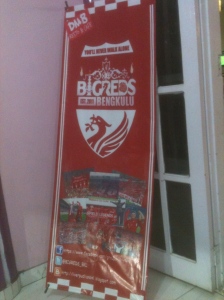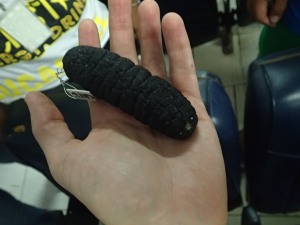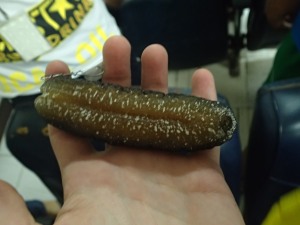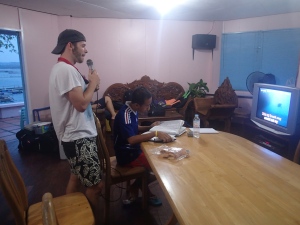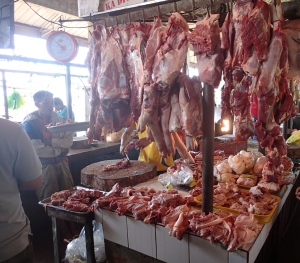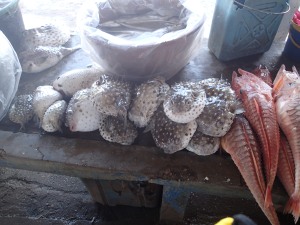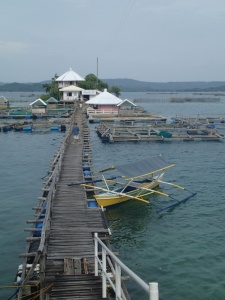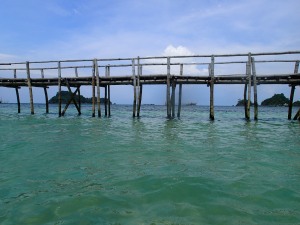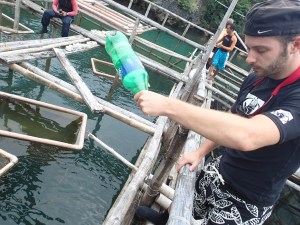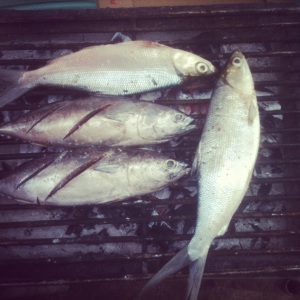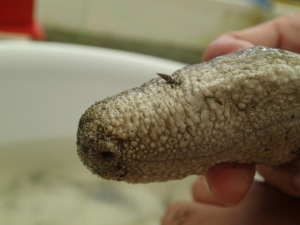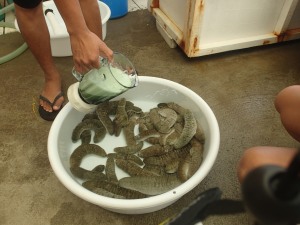This just in, the eighth wonder of the world has been discovered in the distant Sumatran province of Bengkulu. So incredible is this new discovery that grown men have pulled their scooters to an abrupt stop just to gaze upon it. Overcome by emotion, youth scream at the top of their lungs when they see it. It is quickly becoming one of the most photographed icons in the entire city and beyond. Unlike the other Seven Wonders, this wonder is actually a sentient being. It is, in fact, a twenty-six year-old white male who is on some ludicrous mission to start a sea cucumber farm. The more I show my face around town, the more incredulous my existence here seems to be for the general population. I assumed that after a month, the “Hey Misters” would have subsided as the novelty of a new white face wore off. Not so. While “Mister” seems to be the address of choice, bule is another typical exclamation that people shamelessly shout at me as their scooters whiz by. Although it has come to mean foreigner, bule literally means albino. For those of us who are proud of the progress of our tan, it’s a hard pill to swallow.
Despite my popularity, and the pressure of a growing fan base, since returning from the Philippines, my eyes are on the prize. Settling into daily life in Bengkulu is equivalent to learning how to do every basic chore for the first time. Example: laundry. How does laundry happen here? For me, it doesn’t. Laundry seemed a task that was safest to outsource. When the basket is full, I drop off my clothing to a laundry service and return three days to find it washed, dried, pressed and stored in a vacuum-sealed plastic bag. Or that is how the system is supposed to work. On our first foray to the laundry ladies, my uncle realized, upon returning to our apartment, that his distinctly un-Indonesian sized pair of jeans had shrunk into a more Indonesian sized pair of grey briefs. In order to avoid mix-ups of this nature, the laundry ladies count the articles of clothing at drop-off and make sure the same number is present at pick up. It does not take a lot of mental strain to recognize the flaw in this system. With the amount of laundry passing through every day and with that kind of sorting system, it is no wonder accidents occur. Unless of course, you believe more devious forces are at work. Hypothetically, should a larger than normal size pair of American jeans pass through some house of detergent and bleach, a call is made. The laundry mafia boss, who obviously has his hand in every clothes washing operation in Bengkulu, is informed that another item on the clothing black-market wish list has been found. One distinctly un-Indonesian sized Bengkulu native is one pair of pants happier, and one American businessman returns home with someone else’s old pair of grey briefs. Obviously I have no proof that such an underworld exists, but I am definitely not ruling it out.
Another critical step in my adjustment was beginning language school. Bahasa (which literally means language) Indonesia is, thankfully, a very simple language. There are no tenses, no conjugations, and no articles. It is not a tonal language like others in Asia, but more a system of speaking developed to allow a populous, spread of 17,000 islands, to communicate, in some form, with one another. Next to no English is spoken or understood in Bengkulu, hence the urgency for language school. Luckily, there is a language school in town and classes are one-on-one, which allows me to tailor my learning to things that will be most relevant to my daily life here. Thus, my first vocabulary words included trepang – sea cucumber, bertelur – to spawn, jentik-jentik – larva, and jambu – guava. My first sentence proved to be equally critical to my survival: Liverpool Sampai Mati – Liverpool Till Death. Fortuitously, my language teacher and I share a similar passion for Liverpool Football Club. Saturday night Liverpool played West Bromwich Albion at 9 PM local time. In order to attend, I needed to buy a jersey because I foolishly left mine at home. Once properly kitted out, my language teacher picked me up on his scooter and we headed to Dear My Bread, a café which is the home base for Liverpool F.C. Bengkulu, a 150 member fan club. The scene would have made any Premiership manager proud. A sea of red shirts and scarves singing in full voice. None of the group, apart from my language teacher, spoke English, but every single member knew every single word of the team’s anthem, You’ll Never Walk Along. And just when I thought it could not get more surreal, a very Indonesian looking young man walked into the café wearing a shirt that read “We’re not English, we’re Scousers.” In so many senses, that statement across his chest was completely ludicrous, but the boy did not stop single for the entire ninety minute match. When the group discovered that this bule from America had been to Anfield, the home of Liverpool F.C., they demanded to see pictures and my phone was circulated throughout the entire establishment. Who knew? Liverpool F.C., bringing East and West together since 1892.
The fan group even has their own banner

